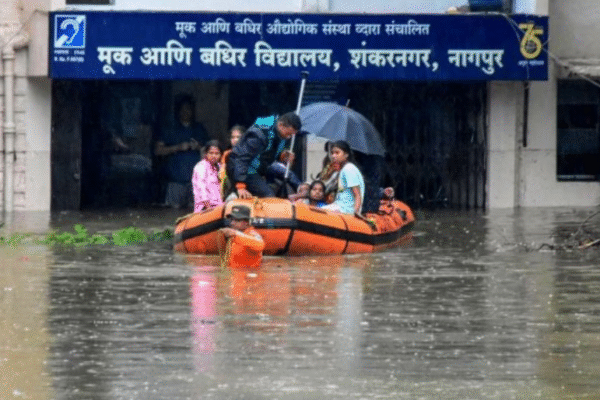
What Happened?
The Nag River overflowed due to heavy, continuous rainfall, submerging streets, homes, and schools. In a tragic outcome, four lives were lost, including a 53-year-old bedridden woman, and over 400 residents were rescued, including 70 students from a school for the speech and hearing-impaired. Bridges and retaining walls in the city collapsed, leaving thousands stranded and property damaged.
Why It Happened?
Experts attribute the disaster to poor urban planning, encroachments along the Nag River, and inadequate flood mitigation infrastructure. The drainage system was unable to handle the sudden deluge, while the Ambazari dam and river embankments were ill-prepared for such heavy rainfall.
Public Anger and Frustration
Residents expressed outrage over the lack of preparedness and slow response from authorities. Many questioned why crucial preventive measures, such as retaining walls and river decongestion, were not in place despite repeated warnings from disaster management agencies.
Two Years Later – The Current Scenario
While the Maharashtra government announced a ₹266.63 crore flood mitigation plan, progress has been slow. Only ₹86.63 crore has been disbursed, leaving many infrastructure projects incomplete. Areas like Ambazari Layout and Shankar Nagar still face flooding risks during heavy rains, and residents fear a repeat of the tragedy. The flood remains a stark reminder of the city’s vulnerability and the urgent need for effective urban planning and disaster management.
As the city marks the second anniversary of the Nagpur flood, the message is clear: floods are not just natural disasters—they are preventable with timely planning, execution, and accountability.















